This picture shows what the Venus transit in 2004 may look like. The big black dot near the bottom is Venus. The yellow arrows show how Venus will move during the transit.
Click on image for full size
This illustration is original Windows to the Universe artwork created by Randy Russell. The image of the Sun is courtesy SOHO (ESA & NASA); information on the apparent size and path of Venus courtesy Fred Espenak, NASA's GSFC.
Transits of Venus
Sometimes the planet Venus gets between Earth and
the Sun. Astronomers call that a "transit"
of Venus. A transit is a little bit like an eclipse
of the Sun, when the Moon
gets between Earth and the Sun.
Transits of Venus don't happen very often. The last one was way back in 1882!
There will be a transit of Venus on June 8, 2004. There will be another one
June 6, 2012. After that, you will have to wait more than a century for another
Venus transit!
The transit in 2004 will last about six hours. It will be possible to see
it from many places on Earth. NASA
has a web site that you can use to find
out about the transit.
In the past, astronomers used measurements
made during a Venus transit to
figure out how big our Solar System is.
You might also be interested in:
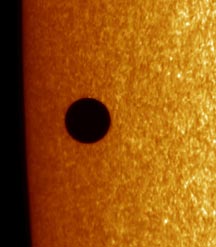
A "transit" is the name of a type of astronomical event. A transit is like a solar eclipse, when the moon blocks out the Sun. During a transit a planet, not the Moon, moves between Earth and the Sun. There
...more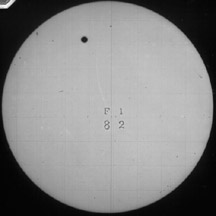
Sometimes Venus passes between Earth and the Sun. This event is called a transit of Venus. Transits of Venus don't happen very often. There is a pattern in the time between transits of Venus. The pattern
...more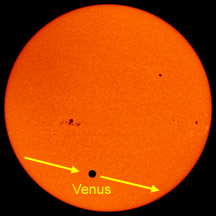
Astronomers are excited about a rare event that will happen in early June 2004. There will be a transit of the planet Venus on June 8, 2004. "Transit" is a word used by astronomers when a planet moves
...more
The planet Mercury will cross in front of the Sun on Wednesday, November 8, 2006. Astronomers call the event a transit. A transit is like a solar eclipse. However, a transit occurs when a planet, instead
...more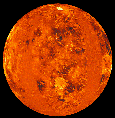
Venus is the second planet from the Sun, and is Earth's closest neighbor in the solar system. Venus is the brightest object in the sky after the Sun and the Moon, and sometimes looks like a bright star
...more
Sometimes the planet Venus gets between Earth and the Sun. Astronomers call that a "transit" of Venus. A transit is a little bit like an eclipse of the Sun, when the Moon gets between Earth and the Sun.
...more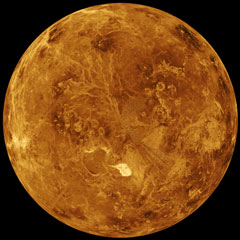
Venus is the hottest planet in our Solar System. On Earth, places near the equator are much warmer than places near the poles. On Venus, it is really hot everywhere... even at the North and South Poles.
...more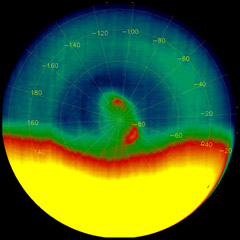
A vortex is a swirling, circular movement of air and clouds... like in a tornado or hurricane. The plural form of vortex is "vortices". The planet Venus has vortices in its atmosphere above each of its
...more












